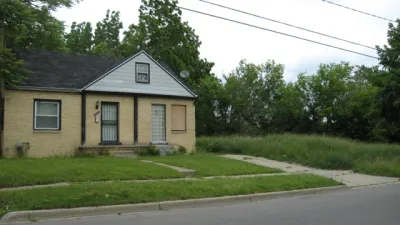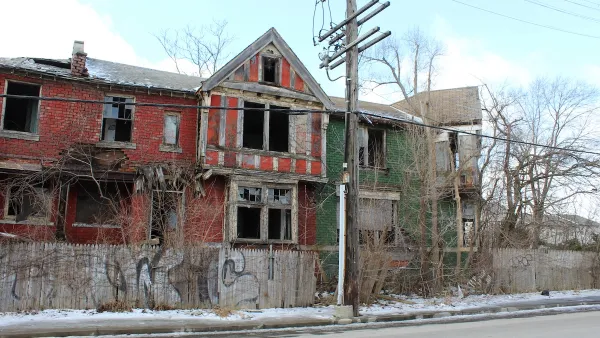Would the Motor City have produced Motown without pianos in every living room?

"The history of American music was literally shaped by the single family housing character of Detroit," writes Aaron M. Renn.
David Maraniss's new book, Once in a Great City: A Detroit Story, points to the signs of decline as early as 1963 when the city was in its economic and artistic heyday. (As Adam Gopnik keenly describes it in The New Yorker, "Humpty Dumpty's most poignant moment [was] just before he toppled over.") But here Renn zeroes in on a housing lesson that runs counterintuitive to today's thinking about urban planning. The single-family homes of Detroit allowed working- and middle-class families to accommodate pianos; and the piano was the springboard for the great musical energy that would become known around the world as Motown.
Renn cautions against making too much of the connection. "As Gordy was founding Motown, Jane Jacobs was pointing out the trouble with Detroit’s 'gray belts' of single families that were already being abandoned." Certainly, Detroit was not the only city of its time with a predominance of single-family homes. Gopnik points to in-group competition, as studied by art historian E.H. Gombrich, as a likely cause of such renaissance, likening it more to 13th-century Florence than other Rust Belt cities. "If Detroit got it worse, it was partly because it had it better," Gopnik writes.
Renn's point is that cities would do well to think creatively about their unique sets of constraints and circumstances. "What this suggests is that cities shouldn’t despair too much about their existing built form, even if in many cases they are struggling with it. The question might be, what does that form enable that you can’t get elsewhere?"
FULL STORY: How Urban Planning Made Motown Records Possible

National Parks Layoffs Will Cause Communities to Lose Billions
Thousands of essential park workers were laid off this week, just before the busy spring break season.

Retro-silient?: America’s First “Eco-burb,” The Woodlands Turns 50
A master-planned community north of Houston offers lessons on green infrastructure and resilient design, but falls short of its founder’s lofty affordability and walkability goals.

Delivering for America Plan Will Downgrade Mail Service in at Least 49.5 Percent of Zip Codes
Republican and Democrat lawmakers criticize the plan for its disproportionate negative impact on rural communities.

Test News Post 1
This is a summary

Test News Headline 46
Test for the image on the front page.

Balancing Bombs and Butterflies: How the National Guard Protects a Rare Species
The National Guard at Fort Indiantown Gap uses GIS technology and land management strategies to balance military training with conservation efforts, ensuring the survival of the rare eastern regal fritillary butterfly.
Urban Design for Planners 1: Software Tools
This six-course series explores essential urban design concepts using open source software and equips planners with the tools they need to participate fully in the urban design process.
Planning for Universal Design
Learn the tools for implementing Universal Design in planning regulations.
EMC Planning Group, Inc.
Planetizen
Planetizen
Mpact (formerly Rail~Volution)
Great Falls Development Authority, Inc.
HUDs Office of Policy Development and Research
NYU Wagner Graduate School of Public Service





























